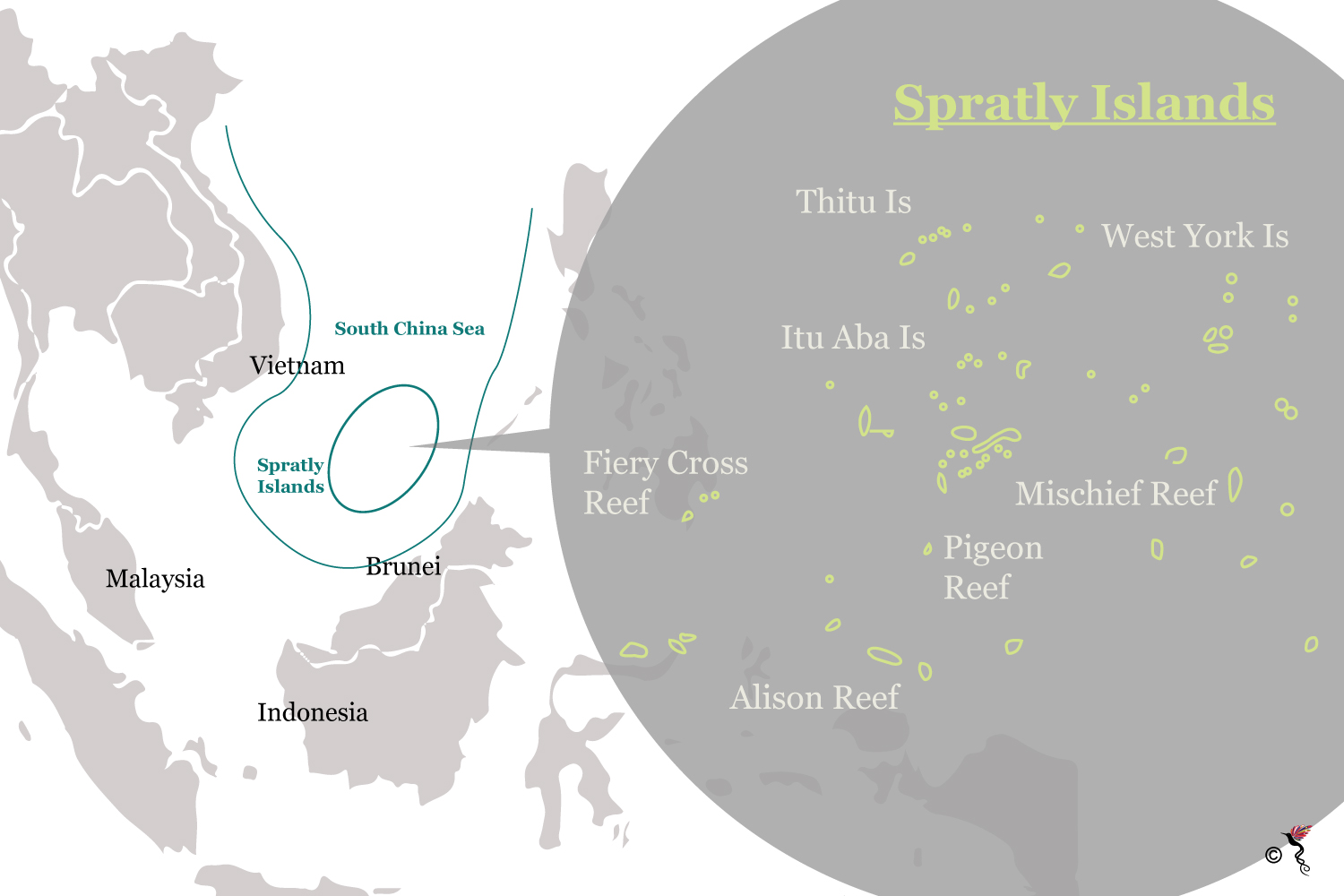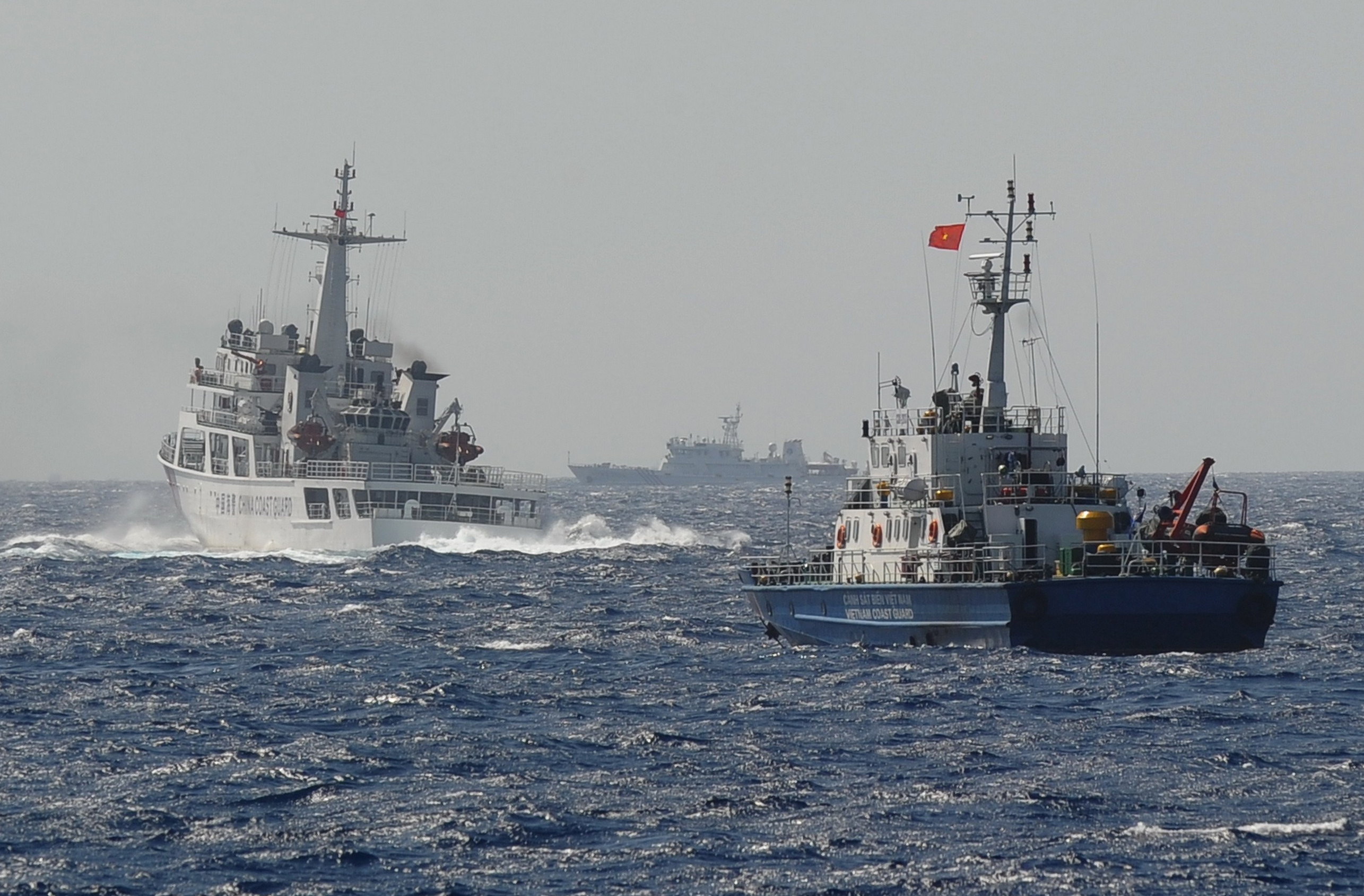South China Sea (SCS) has always been one of busiest and central sea-lane communication for Asia. This sea route is so crucial because it allows for energy, finished goods and unfinished goods to be transported. For a matter of fact, 80% of China’s crude oil imports come through this lane. In addition to SCS being in a strategic location, it has potential to function as an oil reserve and production of natural gas.
ASEAN and China has an existing rapport in terms of economic relations where the latter is the former’s largest trading partner. In 2015, the total bilateral trade was at US$346.4 billion – which is 15.2% of ASEAN’s total trade. Besides that, China also contributed US$8.2 billion of foreign direct investment (FDI) into ASEAN – making China the fourth largest source of FDI.

A map of the Spratly islands.
ASEAN-China negotiations
During the 19th ASEAN-China Summit to commemorate the 25th anniversary of ASEAN-China Dialogue Relations, both ASEAN and China leaders communicated commitment to effectively implement the Declaration of Conduct (DOC) in full and early-adopt the Code of Conduct (COC) based on mutual consent. As a follow-up to that, the leaders accepted the Joint Statement on the Application of the Code for Unplanned Encounters at Sea (CUES) and Guidelines for Hotline Communications among the foreign affairs ministries in reply to maritime emergencies.
Later, at the 14th ASEAN-China Senior Officials’ Meeting, the officials concluded the negotiations on the COC framework draft. The draft was then submitted and accepted at the recent 50th ASEAN Foreign Ministers’ Meeting (AMM) at Manila, the Philippines. Now, that AMM is over, both parties are trusting that the negotiations on the COC will begin soon and this whole SCS dispute can be resolved in the very near future.
“The Joint Communique is a comprehensive document which describes the progress made in relation to the ASEAN-China matters and demonstrates the confidence of all parties related. China has put forward seven major initiatives for the future development of ASEAN-China relationship, which the ASEAN member countries have received it with open hands.” said Chinese Foreign Minister Wang Yi.
ASEAN member countries believe that the SCS dispute between ASEAN-China can be resolved by applying the fundamentals of UNCLOS 1982, which primarily focuses on non-militarisation and discourages threat or use of force. They are hopeful that peace, security and stability can be achieved as well as uphold freedom of navigation in and over-flight above the SCS.
Interference of major powers
Matters that were discussed during AMM includes land reclamations and activities in the area. Many officials from the ASEAN member countries and related governments expressed their concern over the new developments and escalation of activities in SCS which they feared will further increase tensions between ASEAN-China, subsequently eroding the trust and confidence that the nations have been practicing in the past until this SCS issue happened. This can be a threat to the peace, security, stability and safety of the region.
China currently wants the SCS issue to be considered as an ASEAN-China exclusive, instead of interference of other economies that are not related – since there are already ongoing negotiations between ASEAN and China.
However, interference of the SCS dispute from major global powers (Japan, Australia and US) would put pressure on the ongoing discussions between China and ASEAN countries. Both parties have already adopted the COC framework and the negotiations on the COC is expected to commence soon.
